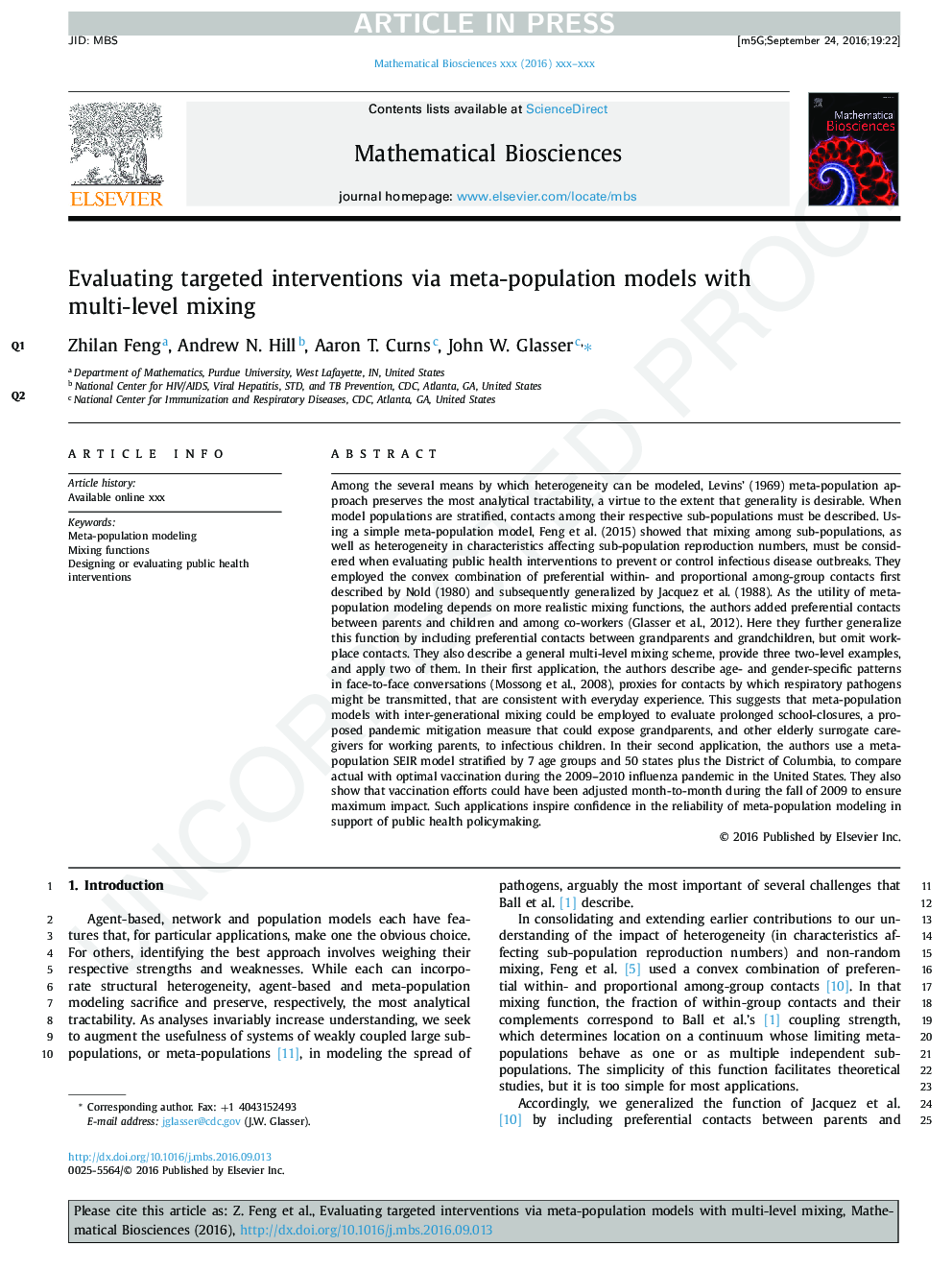| کد مقاله | کد نشریه | سال انتشار | مقاله انگلیسی | نسخه تمام متن |
|---|---|---|---|---|
| 5760406 | 1623993 | 2017 | 12 صفحه PDF | دانلود رایگان |
عنوان انگلیسی مقاله ISI
Evaluating targeted interventions via meta-population models with multi-level mixing
ترجمه فارسی عنوان
ارزیابی مداخلات هدفمند از طریق مدل های فراگیری با اختلاط چند سطحی
دانلود مقاله + سفارش ترجمه
دانلود مقاله ISI انگلیسی
رایگان برای ایرانیان
کلمات کلیدی
مدلسازی جمعیتی، توابع مختلط، طراحی و ارزیابی مداخلات بهداشتی عمومی،
موضوعات مرتبط
علوم زیستی و بیوفناوری
علوم کشاورزی و بیولوژیک
علوم کشاورزی و بیولوژیک (عمومی)
چکیده انگلیسی
Among the several means by which heterogeneity can be modeled, Levins' (1969) meta-population approach preserves the most analytical tractability, a virtue to the extent that generality is desirable. When model populations are stratified, contacts among their respective sub-populations must be described. Using a simple meta-population model, Feng et al. (2015) showed that mixing among sub-populations, as well as heterogeneity in characteristics affecting sub-population reproduction numbers, must be considered when evaluating public health interventions to prevent or control infectious disease outbreaks. They employed the convex combination of preferential within- and proportional among-group contacts first described by Nold (1980) and subsequently generalized by Jacquez et al. (1988). As the utility of meta-population modeling depends on more realistic mixing functions, the authors added preferential contacts between parents and children and among co-workers (Glasser et al., 2012). Here they further generalize this function by including preferential contacts between grandparents and grandchildren, but omit workplace contacts. They also describe a general multi-level mixing scheme, provide three two-level examples, and apply two of them. In their first application, the authors describe age- and gender-specific patterns in face-to-face conversations (Mossong et al., 2008), proxies for contacts by which respiratory pathogens might be transmitted, that are consistent with everyday experience. This suggests that meta-population models with inter-generational mixing could be employed to evaluate prolonged school-closures, a proposed pandemic mitigation measure that could expose grandparents, and other elderly surrogate caregivers for working parents, to infectious children. In their second application, the authors use a meta-population SEIR model stratified by 7 age groups and 50 states plus the District of Columbia, to compare actual with optimal vaccination during the 2009-2010 influenza pandemic in the United States. They also show that vaccination efforts could have been adjusted month-to-month during the fall of 2009 to ensure maximum impact. Such applications inspire confidence in the reliability of meta-population modeling in support of public health policymaking.
ناشر
Database: Elsevier - ScienceDirect (ساینس دایرکت)
Journal: Mathematical Biosciences - Volume 287, May 2017, Pages 93-104
Journal: Mathematical Biosciences - Volume 287, May 2017, Pages 93-104
نویسندگان
Feng Zhilan, Andrew N. Hill, Aaron T. Curns, John W. Glasser,
